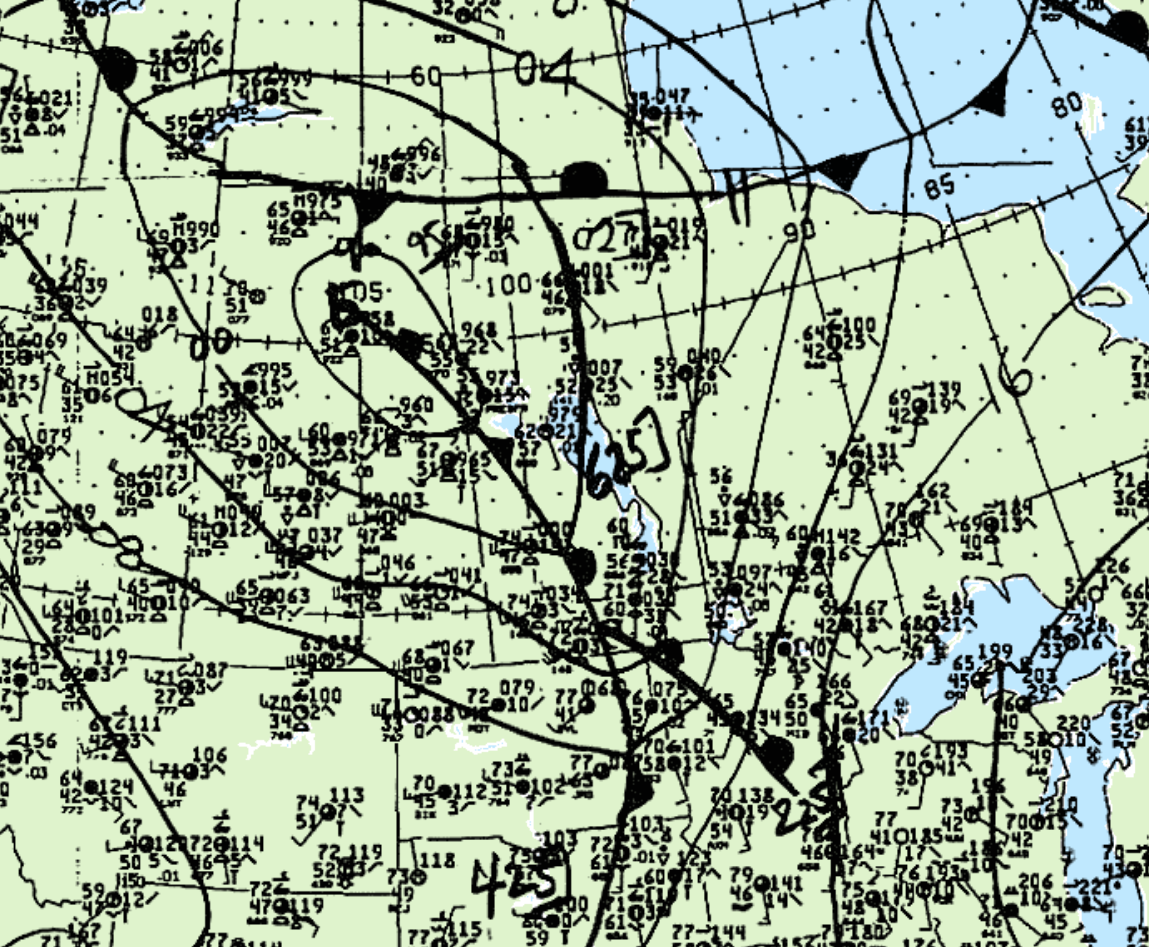Figure 1 shows the surface observations at 1:00 pm CDT, which shows a strong low pressure system over northern Saskatchewan with an extending occluded front across Manitoba. A triple-point is observed across southern Manitoba. The intersection of the occluding front, cold front and warm front provided a favourable environment for rotating storms in the afternoon hours of July 6th. The warm front became the focus for tornadic supercells in southeastern Manitoba, which ultimately led to this F1 tornado.

According to Environment and Climate Change Canada (2018), an F1 tornado touched down at 4:45 pm CDT near Piney, MB. The path and width of the tornado was not documented by ECCC. The tornado caused no fatalities, injuries or property damage.
Sources
NWS Weather Prediction Center Surface Analysis Archive. (2017). Surface analysis 18Z Thu Jun 6 1985. Retrieved from: https://www.wpc.ncep.noaa.gov/archives/web_pages/sfc/sfc_archive.php
Environment and Climate Change Canada Data. (2018). Canadian National Tornado Database: Verified Events (1980-2009) – Public. Retrieved from: http://donnees.ec.gc.ca/data/weather/products/canadian-national-tornado-database-verified-events-1980-2009-public/

